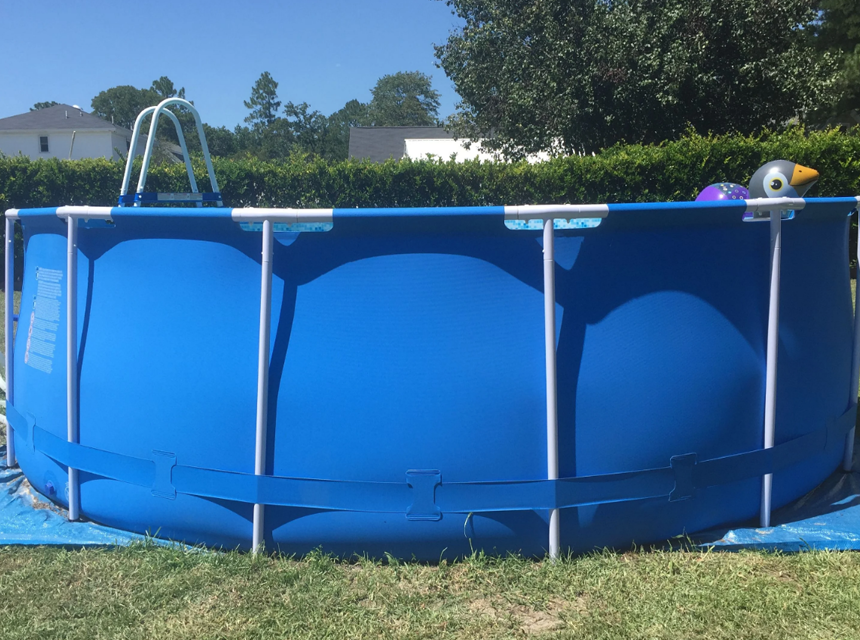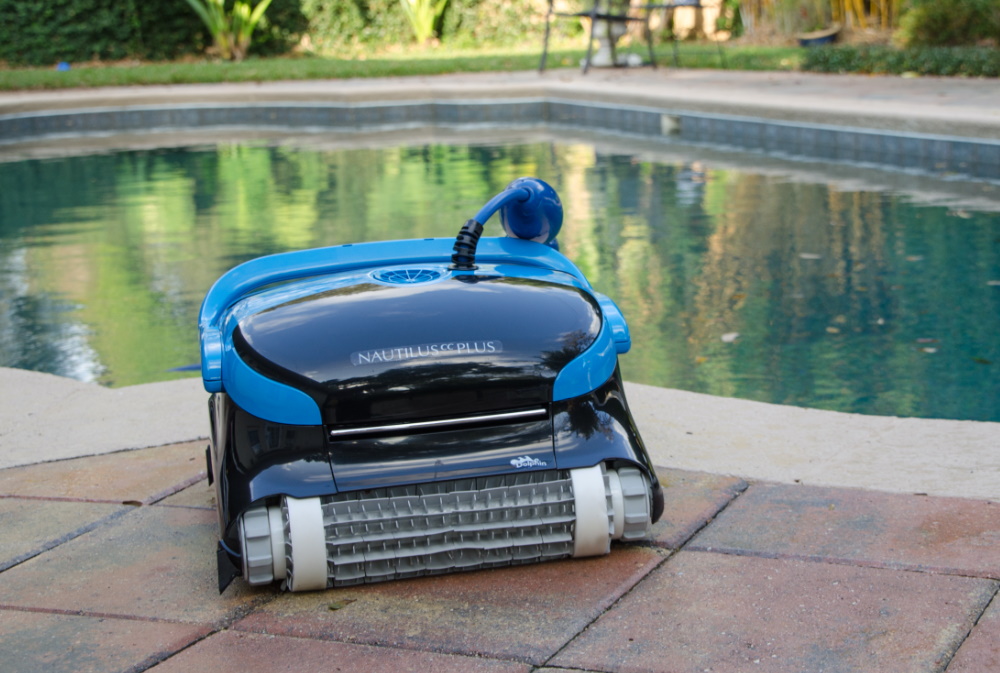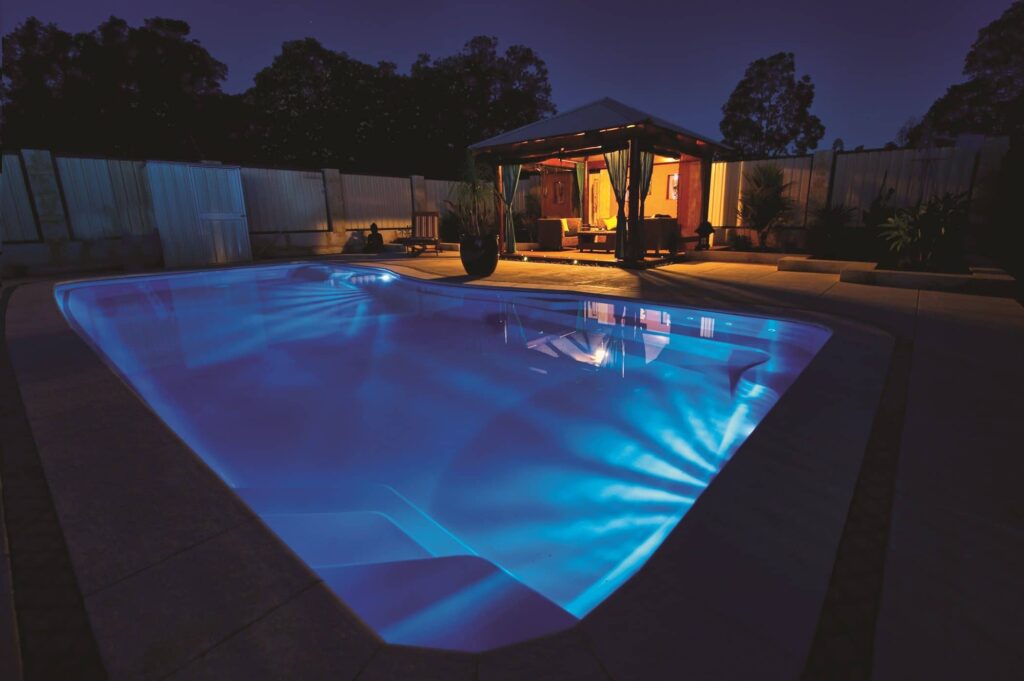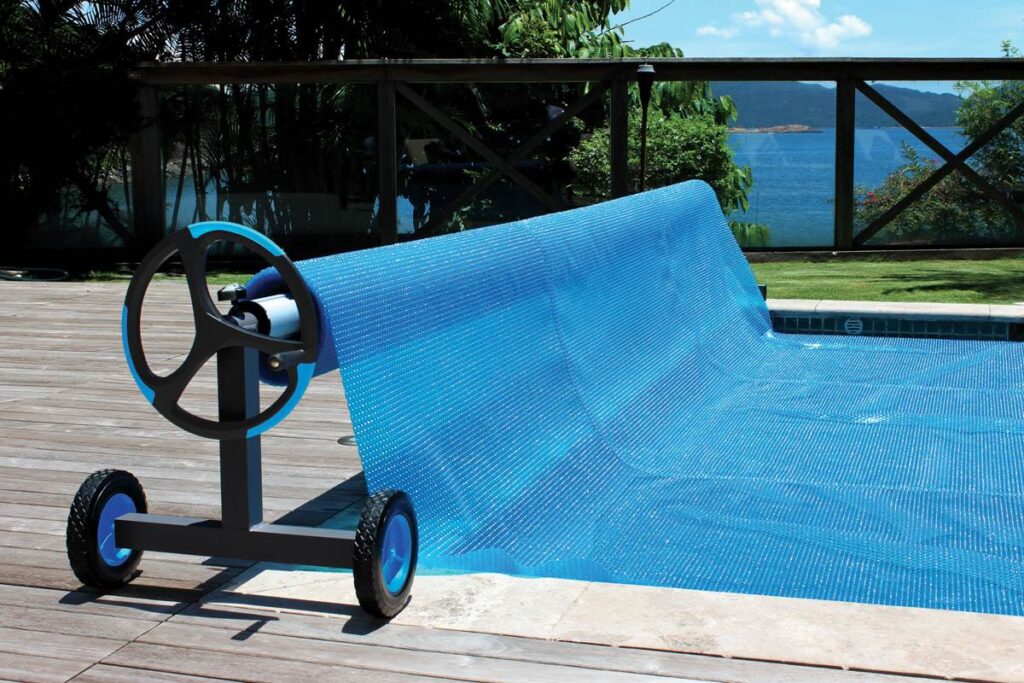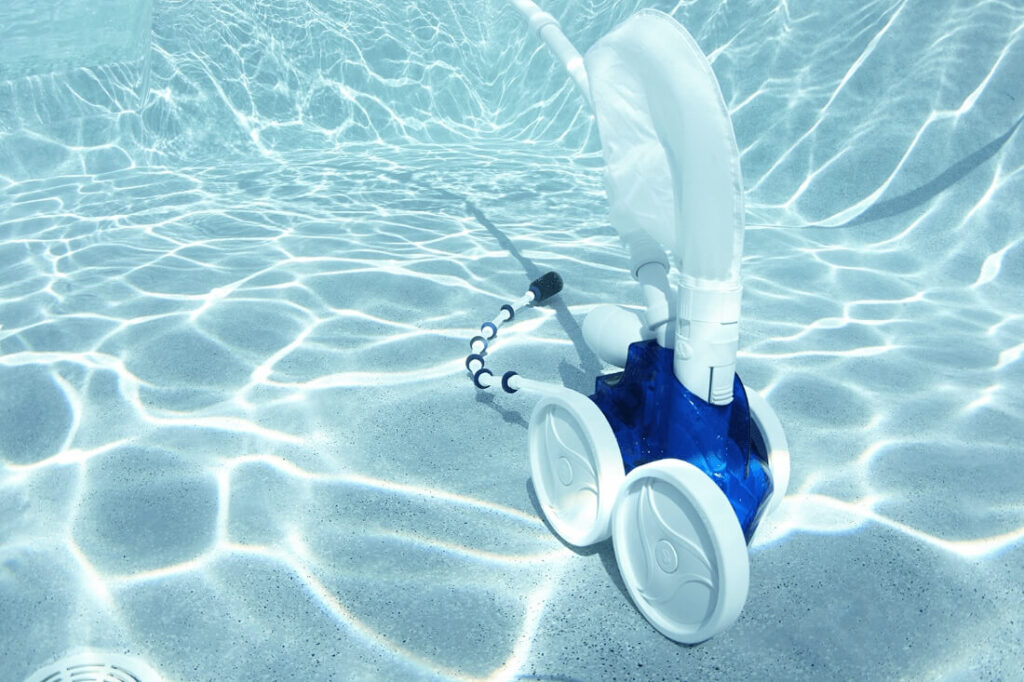We love swimming in the pool with hot water all year round, but we don’t want to pay a lot for the electricity, especially when it’s winter, either. We should give try a pool heat pump that warms the water and saves hundreds of dollars on electricity bills.
We’ve reviewed 27 products to make a list of the 7 best pool heat pumps and can single out the FibroPool FH055 as the best electric pool heat pump because of how quickly and evenly it heats water, its efficiency, and ease of installation. Pool heat pumps come in a wide variety, some with a BTU of 20,000 and others with a BTU of 100,000, some for in-ground pools and others for above-ground pools. With such a great selection to choose from, how do you find the right heat pump? Well, we’re here to help you choose the best pool heat pump, whatever your pool size may be.
More features: titanium heat exchanger, digital display controller, quick disconnect piping
The FibroPool FH055 is designed for use in both in-ground and above-ground pools. It works best on above-ground pools that are up to 21′ round or 15′ x 30′ for oval-shaped pools and 10,000 gallon in-ground pools. Before buying the pump, make sure that your pool doesn’t exceed these sizes. It has a maximum heat output of 55,000 BTU, which is enough to heat the supported pool sizes fairly quickly depending on the prevailing ambient temperature. You’ll initially need to heat your pool for 24-36 hours depending on the climate in your area, and then thereafter do it maybe 3-4 hours, again, depending on the temperature you wish to attain. This unit has a COP of 5.92, which, for a heat pump of its size, is pretty good.
This is a slim unit, a design that eliminates placement challenges, particularly where space may be limited. It has a side access to standard fittings, which makes installation a breeze. Speaking of which, it will take you no more than 30 minutes to install this pump, and if you have a good grasp of electrical connections, you don’t really need a technician to do the installation. The digital control panel is conveniently located for easy access, and you can also use an add-on extension that allows you to adjust the settings from inside the house. Note that you can only adjust the temperature when the heater is off, not when it’s running.
More features: scroll compressors, remote compatibility, DuraSteel Powder coated frame, 3 blade swept-wing fan
Snagging the second position as the Premium Pick is the Raypak Heat Pump 8450, a highly durable pool heat pump enclosed in a DuraSteel powder coated cabinet. The device is a Titanium heat exchanger that will last for a long time and is fitted with a 3-blade swept-wing fan for efficiently heating your pool. It also comes with remote and digital controls for convenient use and operation.
The Raypak Heat Pump 8450 is ideal for those who want a quiet pool heat pump. It is constructed with scroll compressors that will greatly reduce the noise output, offering you silent operation. You can heat your pool without being disturbed by a loud, buzzing sound. The heat pump is also ideal for single-family pool installations.
More features: corrosion-resistant evaporator, UV-resistant body panels, titanium counter-flow heat exchanger
If you have a large pool, the Hayward HeatPro W3HP21404T may just be the kind of heat pump you need. With a heat output of 140,000 BTU, it produces enough heat to raise the temperature in pools with a capacity of 25,000 gallons or more quickly and efficiently. For this size of pool, expect a temperature change in as little as 1 day. If your pool is smaller, say, 7,500 gallons, you can enjoy a warmer pool temperature in less than 3 hours. To ensure maximum heat transfer, the pump uses a titanium counter-flow heat exchanger. The result is sustained and efficient air flow which boosts efficiency.
One of the things you’ll immediately notice when you turn the pump on is that it runs very quietly, thanks to a profiled fan blade and heavy-duty scroll compressor which keep the noise from the motor at a minimum. Anyone who enjoys a quiet home environment knows the joy that comes with finding a home appliance that not only works well, but also noiselessly. It’s almost like stumbling across a set of winning lottery winning numbers.
For durability, the manufacturer uses UV-resistant body panels and a corrosion-free evaporator fin that withstands harsh climatic conditions well. This makes the HeatPro suitable for use in coastal areas.
It comes with an overall limited warranty of 10 years, a 2-year warranty on parts, and a 1-year warranty on labor.
More features: works with GFCI protected outlet, 8-ft power cable, digital panel, for pools up to 7,500 gal
With a BTU output of 20,000, the FibroPool FH120 is, in many aspects, the best electronic pool heat pump for small pools. It’s optimized for pools of up to 7,500 gallons and works best in coastal climates. You can use it on both in-ground and above-ground pools. For above-ground pools, the manufacturer recommends it for sizes no greater than 18′ round or 12′ x 24′ if oval. It’s been our experience that the heat pump works efficiently as long as your pool is within the recommended size limits. The pump uses a combination of a titanium heat exchanger and a high-pressure scroll compressor to boost energy efficiency, and this leads to a COP (Coefficient of Performance) of 4.81. This means that for every dollar, the heat produces 4.81 times the heat. By industry standards, this is good enough for a pump of this size.
There’s a digital display that allows you to control the heating settings easily, and an optional extension cable enables you to adjust the settings comfortably from the house. It comes with an 8-foot long power cable and a standard USA plug, which gives you a fair amount of flexibility when it comes to where you can plug it in. Installation is quick and straightforward. It should take you 10-30 minutes to get it up and running.
More features: 55 dB noise level, titanium heat exchanger, IceBreaker® technology, on-board diagnostics, flip-out control panel
The AquaCal Heatwave SQ225 has a heat output of 143,000 BTU, which is high enough to heat a medium or large pool. A huge advantage in this is that if you have a smaller pool, this pump will raise the temperature in a far shorter time frame than if you used a smaller pump.
The pump uses the patented ThermoLink titanium heat exchanger, a 100% titanium tube that is resistant to water-chemistry damage. The technology uses a water management system that maximizes surface contact of the pool water with the heat exchanger in a hydraulic design that is compatible with two-speed and variable speed pool pumps.
An innovative feature you’ll enjoy using is the IceBreaker Technology which is behind the Heat, Cool, and Autotemp modes. This is the technology that enables the pump to continue to heat the water even when the temperature is at freezing levels so as to minimize heat loss.
The pump’s digital display is microprocessor-controlled, complete with on-board diagnostics and a defrost cycle. It uses a flip-out control panel, which is kept out of sight to protect it against sun and weather damage.
The outer cabinet features rust and fade-proof louvered side panels, so designed to boost air flow while protecting the evaporator coil, and a built-in drain pan to manage condensate.
It’s compatible with AqualCal’s PoolSync app, meaning you can control the pump and adjust your settings via your smartphone. Change the mode and temperature, and create schedules that automatically adjust your pump settings in the most convenient, hands-off way.
More features: profiled fan-blade, corrosion-resistant evaporator, titanium counter-flow heat exchanger, UV-resistant body panels
The Hayward W3HP21104T is made with durability in mind, from the hardy stainless steel hardware to the injection-molded, UV-protected body panels and high-tech features. The manufacturer uses a corrosion-resistant evaporator fin to further boost durability, and this makes it suitable for use in humid, coastal environments.
This unit has a heat output of 110,000 BTU, which makes it excellent for small and medium-size pools. The manufacturer recommends it for use in pools with a capacity of 25,000 gallons. To support the maximum heat transfer possible, they’ve used a titanium counter-flow heat exchanger. Heavy-duty scroll compressors and a profiled fan blade ensure that air flow is efficient. These two are designed to do so with minimum noise, and in a big way, account for the low noise the pump emits while running.
Hayward gives a comprehensive guarantee that is broken down into a 10-year warranty on the titanium tube, 5-year warranty on parts (and compressor), and 1-year warranty on labor. To enjoy this guarantee, especially on parts, use a professional HVAC technician to install the pump for you. Otherwise, when you self-install or use a non-certified technician, you only get 2-years of warranty on parts. Now, for an outdoor product that will be in regular contact with corrosive water, you’d expect to deal with repairs soon enough, and for this Hayward, the repairs can quickly become numerous. So have a technician install it for you to enjoy 5 years of assistance with repairs.
More features: 8-ft cord, titanium heat exchanger, automatic defrosting, LCD control board, ETL listed
The large, 20-volt, 108,000 BTU Pentair 460932 UltraTemp is arguably the best swimming pool heat pump for small and medium sized pools. It’s easy to install and runs surprisingly quietly for a pump of its size.
One of its exciting features is the automatic defrost function, which can sense the refrigerant temperature and adjust accordingly to prevent the ThermoFlo from freezing. This also allows the pump to operate at lower temperatures.
An auto set time clock turns the circulation pump on and off as needed to help maintain your desired pool temperature. All you have to do is set the pool pump timer override to specific intervals and it does the rest. There’s an LCD control panel and display that makes it easy for you to adjust your settings as you like.
For optimum efficiency, the pump uses an Emerson Copeland scroll compressor and a thermostatic expansion valve to control refrigerant flow. Emerson Copeland scroll compressors use a high-tech orbiting mechanism to maintain temperature at the desired level and are among the most reliable products in the market.
If you’re spending thousands of dollars on a heat pump, you need to be confident about the quality of the product you’re buying. And objective assessments from independent bodies certainly tell whether a product is good enough to invest in. This Pentair is ETL listed for safety and has been certified by AHRI (Air Conditioning, Heating & Refrigeration Institute) for efficiency and performance.
Having a reliable pool heat pump means you can keep the temperature of your swimming pool water at your most preferred range. But it all starts with identifying the right heat pump, which is what this next section is all about. We’ll now look at how heat pumps work, what benefits you stand to gain by using one, and how to choose one.
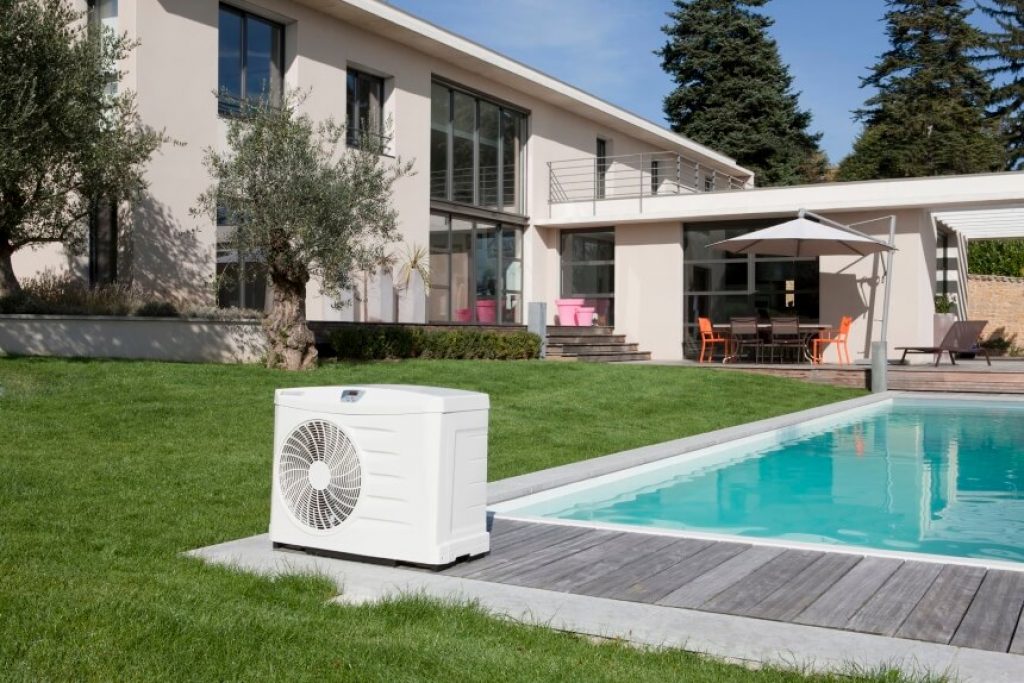
With a pool heat pump, you can enjoy swimming and playing in the pool a little longer at the end of summer. In fact, you may still enjoy dipping into the pool well into the autumn, especially if you live in the warmer zones.
Heating your pool with a heat pump is more economical over the long run than using a gas heater. It’s an effective way of improving the quality of your life without incurring excessive expenses.
If you invest in a quality heat pump, you won’t need to replace it for years. Save for occasional repair costs, you’ll not have many maintenance and running costs to deal with. We also recommend you get the proper cover for your pool to trap that heat, as well as the pool cover reel to make things easier.
Heat pumps rely on the refrigerant to transfer heat from ambient air (the air in the room) to the pool. The refrigerant is typically cold and flows through tubes in its low pressure, liquid-gaseous state. These tubes are exposed to ambient air, which is warmer than the refrigerant flowing through the tubes, and because heat moves from warmer areas to cooler ones, the heat in the air then moves to the refrigerant.
The tubes are connected to an evaporator, a type of heat exchanger with fins that aid in the absorption of heat from the air into the refrigerant. A fan rotating near the tubes increases the flow of ambient air over the evaporator, thereby further increasing heat absorption.
As the heat enters the refrigerant, the temperature of the refrigerant rises and the liquid begins to transform into a warm, low pressure vapor, eventually changing from liquid to gas as it makes its way through the evaporator. It’s then exposed to the compressor, which increases the pressure of the gas. This, in turn, raises the temperature of the gas and as it becomes hotter, the heat flows from the refrigerant to the colder water.
The compressor then forces the high pressure gas into the second heat exchanger, the condenser, which is in contact with the water. As the hot refrigerant gas moves through the condenser, it loses its heat to the water, essentially heating it. The gas then cools off below its condensation point and changes to a high pressure liquid state.
At the end of the condenser, the refrigerant liquid passes through an expansion valve with a greater surface area which reduces its pressure and temperature. From the valve, the low pressure, liquid-gaseous refrigerant then makes its way into the tubes, and the cycle begins again.
Heat pump prices are in the thousands, and the price increases with size. Small pumps range from $1,200 and up, although the best of them cost slightly more, say $2,000-$3,000, while bigger pumps with heat outputs in the 100,000 BTU range average $3,500 to $5,000. If you’re lucky to get a discount, the price difference can be significant, but overall, budget for the figures we’ve mentioned here.
Let’s now consider the specific features you should pay attention to when choosing a pool heat pump for purchase.
The size of the heat pump you choose is determined by the size of your pool. And other than just the physical dimensions of the pool, there are additional factors that can increase the heating load of the pool, such as humidity levels, wind exposure, and temperature rise. To get the temperature rise, consider the average pool temperature during the coldest month, and deduct this amount from your desired temperature, which is the temperature up to which you want to heat the pool water. The more the heating load of your pool, the higher the heat output (BTU) per hour required.
Energy efficiency of a pool heat pump is measured through COP (Coefficient of Performance), and what it means is that for every unit of electricity the pump uses, it produces a certain amount of heat. COP gives a good idea of how much heat energy you’re going to get vis a vis what you spend to generate the heat. Manufacturers usually indicate what the COP is based on the tests they’ve used to determine this, and the higher the COP is, the more energy efficient the pump is. COP usually ranges from 3.0-7.0, so you want to choose a pump with a COP that’s closer to 7.0, like the FibroPool FH055, whose COP is 5.92.
A heat pump is a big purchase. You want to make sure you get the best warranty available for it. Some manufacturers issue a lifetime limited warranty, as is the case with the AquaCal Heatwave SQ225. Ten-year limited warranties are more common, though, and these may not cover mechanical parts. Hayward HeatPro W3HP21404T, Hayward W3HP21104T, FibroPool FH120 and FibroPool FH055 all offer this. What’s more important is to ensure that the parts are covered for a reasonable amount of time, say 5 years, because you’ll need to replace these quite a bit throughout the pump’s lifespan.
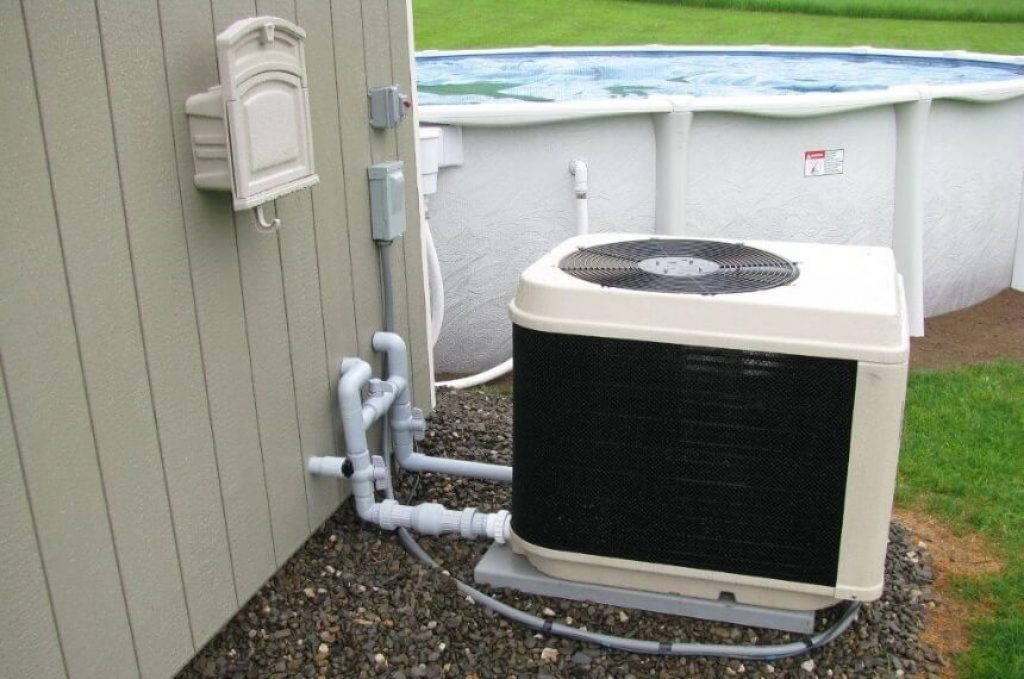
A good number of heat pumps are easy to install for anyone with some knowledge of how electrical connections work. It’s important to ensure that you install the pump correctly because improper installation can reduce efficiency, not to mention damage the heat pump. Moreover, some manufacturers insist that you use a professional to install the pump for you, and failure to do so will void your warranty. To be on the safe side, understand what the manufacturer’s recommendation on installation is and follow it.
Choose a heat pump that is built to last so that you don’t have to replace it after a short while. The materials used and build quality are good pointers to how durable the pump might be. If the manufacturer is giving you a 10-year or lifetime guarantee on the pump, it means they believe the pump should remain usable for that duration, and this can be another indication of a well-built pump that is worth buying.
Check whether the manufacturer has put any safety measures in place to safeguard you from injury during use. Does the pump have overvoltage protection, for example? The FibroPool FH120 is configured to work with GFCI-protected outlets to safeguard against electric shock. In pool heat pumps like the FibroPool FH055, you cannot adjust the temperature when the machine is on. You must first turn it off and then change the temperature settings.
Some heat pumps are bulky, and some are slim. Choose a design that doesn’t leave your pool area looking crowded. If you have little space, go for a compact pump that can be mounted in a number of ways so you have some flexibility about where and how to install it. If space is not a problem, you may opt for a bigger model.
Begin by choosing where to install the pump. It should be in an open place for maximum air flow and close to the swimming pool to minimize heat loss.
Connect to the plumbing system using the right size of elbow fittings and PVC connections.
Connect the electrical wires.
If you’re not a technician, it’s a good idea to hire a licensed electrician to do the installation for you just to ensure that the pump is installed correctly and all industry codes regulations are adhered to.
Our top choice, the FibroPool FH120, stands out for its compact design and efficiency. We like that you can use it for both small in-ground and above-ground pools. Other noteworthy features include the long power cable and extension cable, the digital control panel, and the ease of installation.
Our second choice is the Raypak Heat Pump 8450, which will impress you with its powerful 137,000 BTU. It’s a perfect choice for single-family pool installations and those looking for quiet operation, and we especially like the remote and digital functions that simplify the use.
Our third best pool heat pump is Hayward HeatPro W3HP21404T, whose high heat output makes it perfect for heating all sizes of pools, from small to larger ones. We like the UV-resistant cabinet, the corrosion-resistant evaporator fins, the titanium counter-flow heat exchanger, its quiet operation, and the comprehensive warranty.
